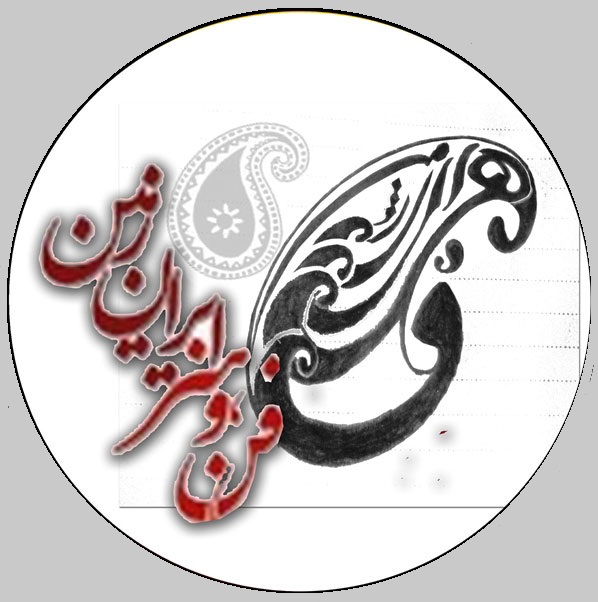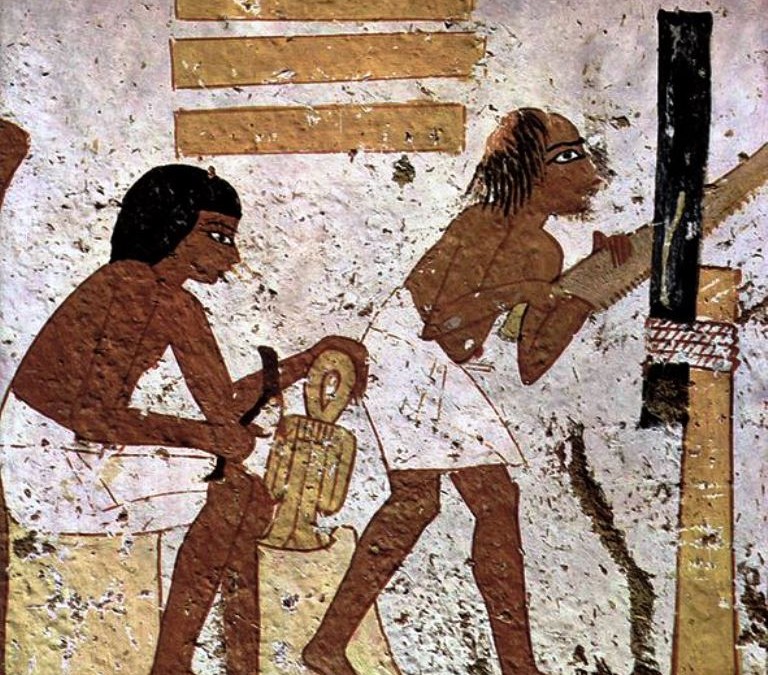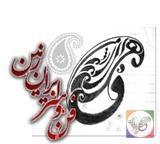Woodworking is the process of making items from wood.
Contents
1 History
2 Materials
3 Notable woodworkers
4 See also
5 Notes
6 References
6.1 Further reading
7 External links
History
خراطی
خراطی شیوهای از تولید محصولات چوبی است که طی آن و توسط ابزار و وسایل مختلف و عمدتاً به وسیلهٔ دستگاه خراطی اشیایی نظیر قلیان، گهواره، پایهٔ آباژور و ظروف مختلف ساخته و پرداخته میشود.[۱] خراطی ساختن اشیا از چوب است که سابقهای بسیار طولانی دارد. بقایای نقش برجستههای کاخ داریوش در تخت جمشید نشان میدهد که تخت و چهار پایه و عودسوز آن به شیوهٔ خراطی تهیه شدهاست.شاردن جهانگرد فرانسوی نیز تحت تاثیر مهارت خراطان ایران قرار گرفته و سخن گفتهاست. حرفه خراطی از هنرهای مکانیکی است که ایرانیان توانستهاند از آن به خوبی بهره برداری کنند.
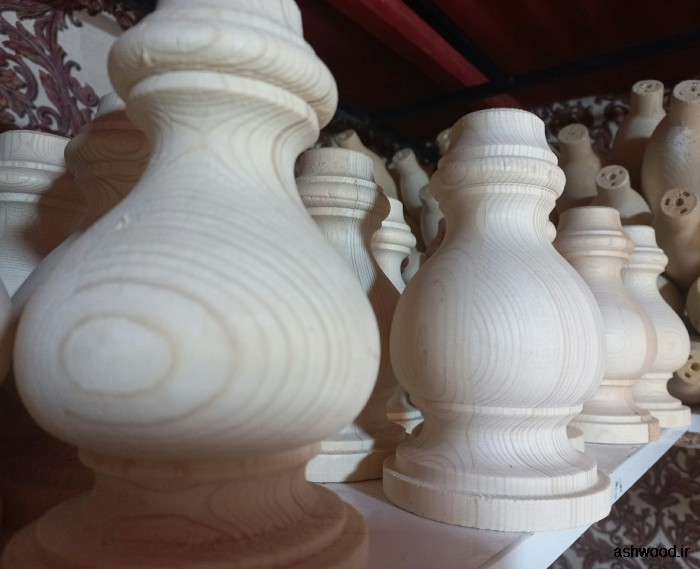
خراطی چوب یکی از صنایع دستی سنتی ایران است که از زمانهای قدیم در این مرز و بوم رواج داشته و به طور معمول در مناطقی از کشور که چوب در آنجا بیشتر یافت میشود رایج است. در هنر خراطی اشیاء به صورت متقارن ساخته میشود اغلب از چوبهای نرم و اندکی مرطوب برای این کار استفاده میکنند. هنر خراطی از تراش و شکل بخشیدن به چوب در اثر حرکت دورانی دستگاه خراطی حاصل میشود. سابق بر این دستگاه خراطی مشتمل برچند ابزار دستی بود که از چوب ساخته و پرداخته میشد در حال حاضر این دستگاه علاوه بر تغییر شکل ظاهریش ازدو بازوی فلزی تشکیل شدهاست که با قرار گرفتن ومحکم شدن حجم چوبی میان آنها، وبا چرخش چوب حول یک محور کار و با استفاده از میلههای فلزی (مغار))هر کدام درایجاد فرو رفتگی یا خراشیدگی خاصی استفاده میشوند(بر حجم چوبی، شکل مورد نظر را ایجاد مینمایند.

در خراطی چوب از دستگاه تراش افقی نسبت به تراش چوب استفاده میکنند. از جمله این اثارکه سابقهٔ تاریخی دارد، می توان بهحجاریهای تخت جمشیدنقوشی ازتخت وچهارپایهسلطنتی وعودسوزرا میتوان نام برد. در هنر خراطی هرچه چوب فشردهتر ومحکمتر باشدمی توان به کارهای ظریف تر پرداخت وهمچنین دوام آن بیشتر میشود. یک نمونهازانواع چوب خراطی میتوان به چوب سپیدار اشاره کرد. وسیله کارانها درقدیم چهارچوبی بود که رکاب داشت که سروته چوب رابه دهانه ان محکم کرده وتوسط کمانی چوب باحرکت دورانی حول محور خود میچرخد. امروزهاین دستگاه برقی شده وکار خراطان تاحدودی راحت شده، نوع دیگر ابزار (مغار) است کهسرآن شبیه ناخن میباشد. مغاربه چوبی که حول محور خود میچرخد، فشار وارد نموده تا شکل مورد نظررا خراطی کند.
Ancient Egyptian woodworking
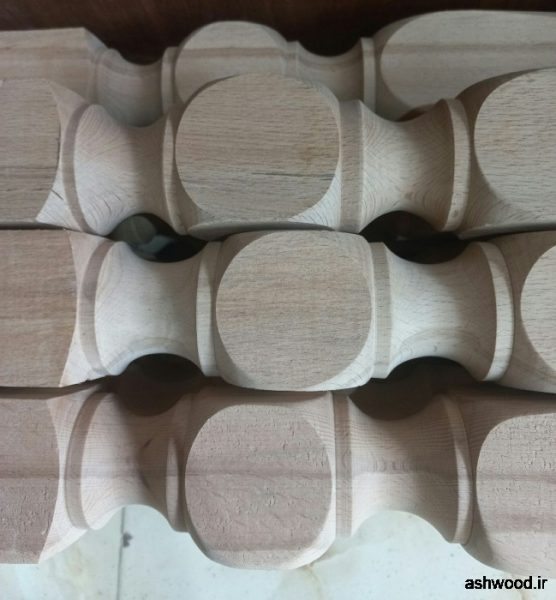
Along with stone, mud and animal parts, wood was one of the first materials worked by early humans. Microwear analysis of the Mousterian stone tools used by the Neanderthals show that many were used to work wood. The development of civilization was closely tied to the development of increasingly greater degrees of skill in working these materials.

Woodworking shop in Germany in 1568, the worker in front is using a bow saw, the one in the background is planing.
Among early finds of wooden tools are the worked sticks from Kalambo Falls, Clacton-on-Sea and Lehringen. The spears from Schöningen (Germany) provide some of the first examples of wooden hunting gear. Flint tools were used for carving. Since Neolithic times, carved wooden vessels are known, for example, from the Linear Pottery culture wells at Kückhofen and Eythra.
Examples of Bronze Age wood-carving include tree trunks worked into coffins from northern Germany and Denmark and wooden folding-chairs. The site of Fellbach-Schmieden in Germany has provided fine examples of wooden animal statues from the Iron Age. Wooden idols from the La Tène period are known from a sanctuary at the source of the Seine in France.
The ancient civilization that first used woodworking was the Egyptians. Woodworking is depicted in many ancient Egyptian drawings, and a considerable amount of ancient Egyptian furniture (such as stools, chairs, tables, beds, chests) has been preserved in tombs. As well, the inner coffins found in the tombs were also made of wood. The metal used by the Egyptians for woodworking tools was originally copper and eventually, after 2000 BC bronze as ironworking was unknown until much later.
Commonly used woodworking tools included axes, adzes, chisels, pull saws, and bow drills. Mortise and tenon joints are attested from the earliest Predynastic period. These joints were strengthened using pegs, dowels and leather or cord lashings. Animal glue came to be used only in the New Kingdom period.[2] Ancient Egyptians invented the art of veneering and used varnishes for finishing, though the composition of these varnishes is unknown. Although different native acacias were used, as was the wood from the local sycamore and tamarisk trees, deforestation in the Nile valley resulted in the need for the importation of wood, notably cedar, but also Aleppo pine, boxwood and oak, starting from the Second Dynasty.
The progenitors of Chinese woodworking are considered to be Lu Ban (魯班) and his wife Lady Yun, from the Spring and Autumn Period. Lu Ban is said to have introduced the plane, chalk-line, and other tools to China. His teachings were supposedly left behind in the book Lu Ban Jing (魯班經, “Manuscript of Lu Ban”). Despite this, it is believed that the text was written some 1500 years after his death. This book is filled largely with descriptions of dimensions for use in building various items such as flower pots, tables, altars, etc., and also contains extensive instructions concerning Feng Shui. It mentions almost nothing of the intricate glue-less and nail-less joinery for which Chinese furniture was so famous.
Damascene woodworkers carving wood for hookahs, 19th century.
Micronesian of Tobi, Palau, making a paddle for his wa with an adze.
Materials
Historically, woodworkers relied upon the woods native to their region, until transportation and trade innovations made more exotic woods available to the craftsman. Woods are typically sorted into three basic types: hardwoods typified by tight grain and derived from broadleaf trees, softwoods from coniferous trees, and man-made materials such as plywood and MDF.
Typically furniture such as tables and chairs is made using solid stock, and cabinet/fixture makers employ the use of plywood and other man made panel products
مطالب مرتبط :
- ساخت پله چوبی به روش ژاپنی ( همه چیز درباره نجاری ژاپن )
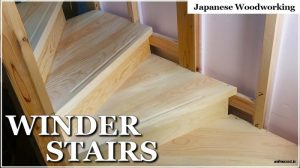 نجاری ژاپنی تمرکز بیشتری بر جزییات و نمایش درخشش چوب دارد. آنها از تکنیکهای مختلفی برای ایجاد طرحهای زیبا و وسواس در جزئیات استفاده میکنند
نجاری ژاپنی تمرکز بیشتری بر جزییات و نمایش درخشش چوب دارد. آنها از تکنیکهای مختلفی برای ایجاد طرحهای زیبا و وسواس در جزئیات استفاده میکنند - ابزار های نجاری ، دانستنی های نجاری ، خدمات نجاری و تعمیر درب
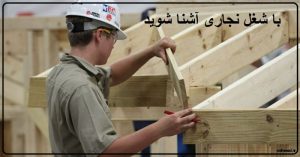 نجاری و درودگری ، نجاری یکی از صنایع قدیمی و مهم است که در طول سالها تکامل کرده و به تولید ابزارهایی برای ساخت و تعمیر اشیا چوبی پرداخته است
نجاری و درودگری ، نجاری یکی از صنایع قدیمی و مهم است که در طول سالها تکامل کرده و به تولید ابزارهایی برای ساخت و تعمیر اشیا چوبی پرداخته است - نجاری یک هنر است
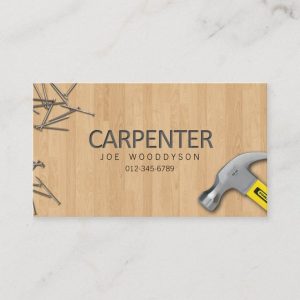 نجاری هنری است که به شما امکان می دهد تزئینات و زیور آلات منحصر به فردی را بر روی محصولات مبلمان ایجاد کنید که به شاهکاری جاودانه تبدیل می شود
نجاری هنری است که به شما امکان می دهد تزئینات و زیور آلات منحصر به فردی را بر روی محصولات مبلمان ایجاد کنید که به شاهکاری جاودانه تبدیل می شود - عکس کارگاه نجاری
 عکس کارگاه نجاری نشانگر فعالیت های مربوط به نجاری و کار با چوب است. در این عکس، یک تصویر از یک کارگاه نجاری به تصویر کشیده شده است. در این تصویر، میتوان یک نجار را در حال کار با چوب دید.
عکس کارگاه نجاری نشانگر فعالیت های مربوط به نجاری و کار با چوب است. در این عکس، یک تصویر از یک کارگاه نجاری به تصویر کشیده شده است. در این تصویر، میتوان یک نجار را در حال کار با چوب دید. - نجاری چیست ؟ اصول نجاری برای مبتدیان
 نجاری شامل برش ، شکل دادن و نصب چوب برای ساختمان ها و سازه ها است . نجاری یک تجارت ماهرانه است که قدمت آن به هزاران سال قبل باز می گردد ، اما هنوز به طور گسترده در ساخت و سازهای مدرن استفاده می شود
نجاری شامل برش ، شکل دادن و نصب چوب برای ساختمان ها و سازه ها است . نجاری یک تجارت ماهرانه است که قدمت آن به هزاران سال قبل باز می گردد ، اما هنوز به طور گسترده در ساخت و سازهای مدرن استفاده می شود - چگونه اتصالات در نجاری دکوراسیون چوبی را پایدارتر می کند
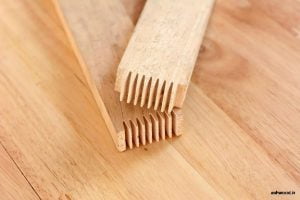 اتصالات چوبی در نجاری , فینگر جوینت , اما توجه نکردن به این اتصالات یک اشتباه خواهد بود . مفاصل مهم هستند ، بسیار زیاد و نه فقط برای دوام و استحکام .
اتصالات چوبی در نجاری , فینگر جوینت , اما توجه نکردن به این اتصالات یک اشتباه خواهد بود . مفاصل مهم هستند ، بسیار زیاد و نه فقط برای دوام و استحکام .
